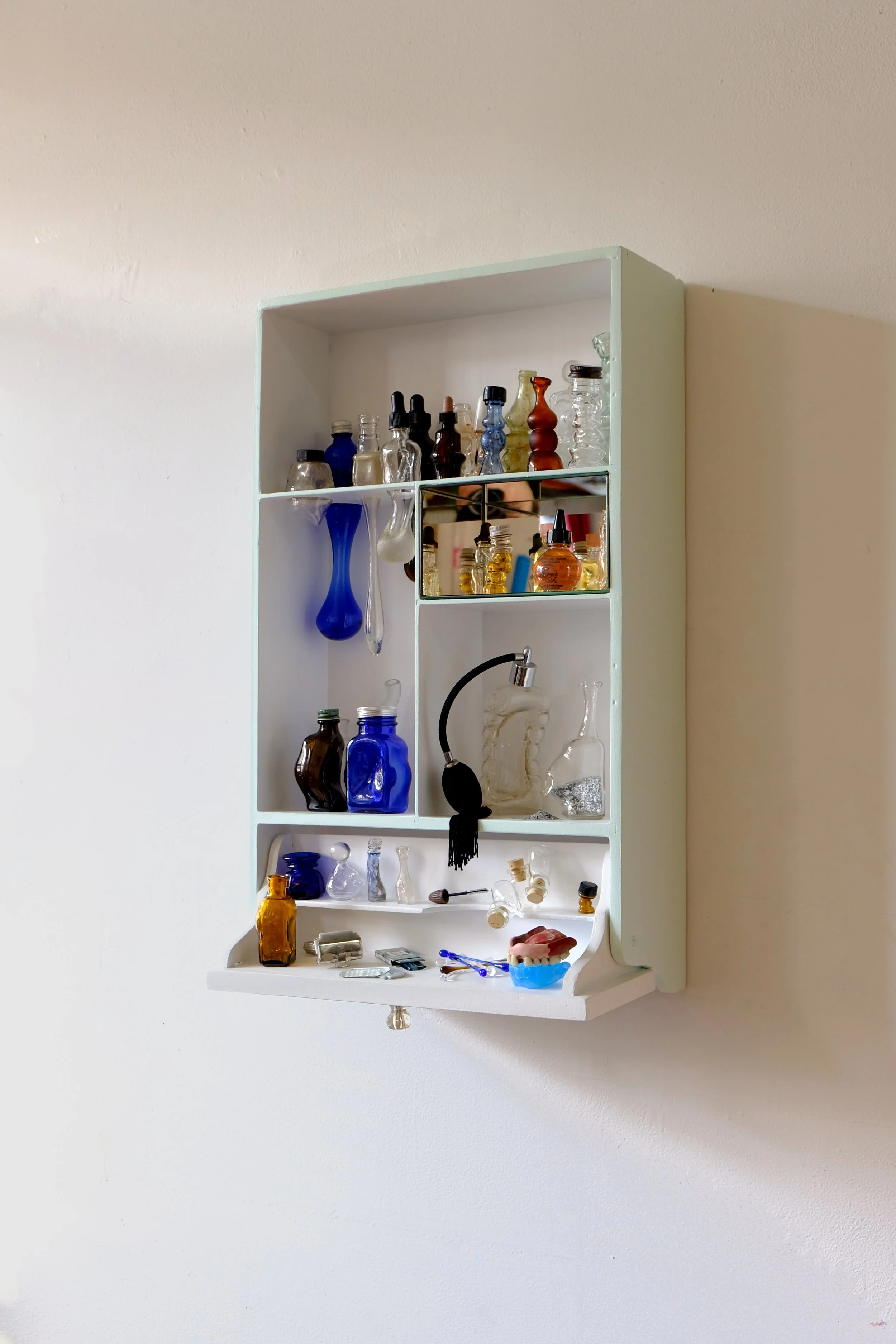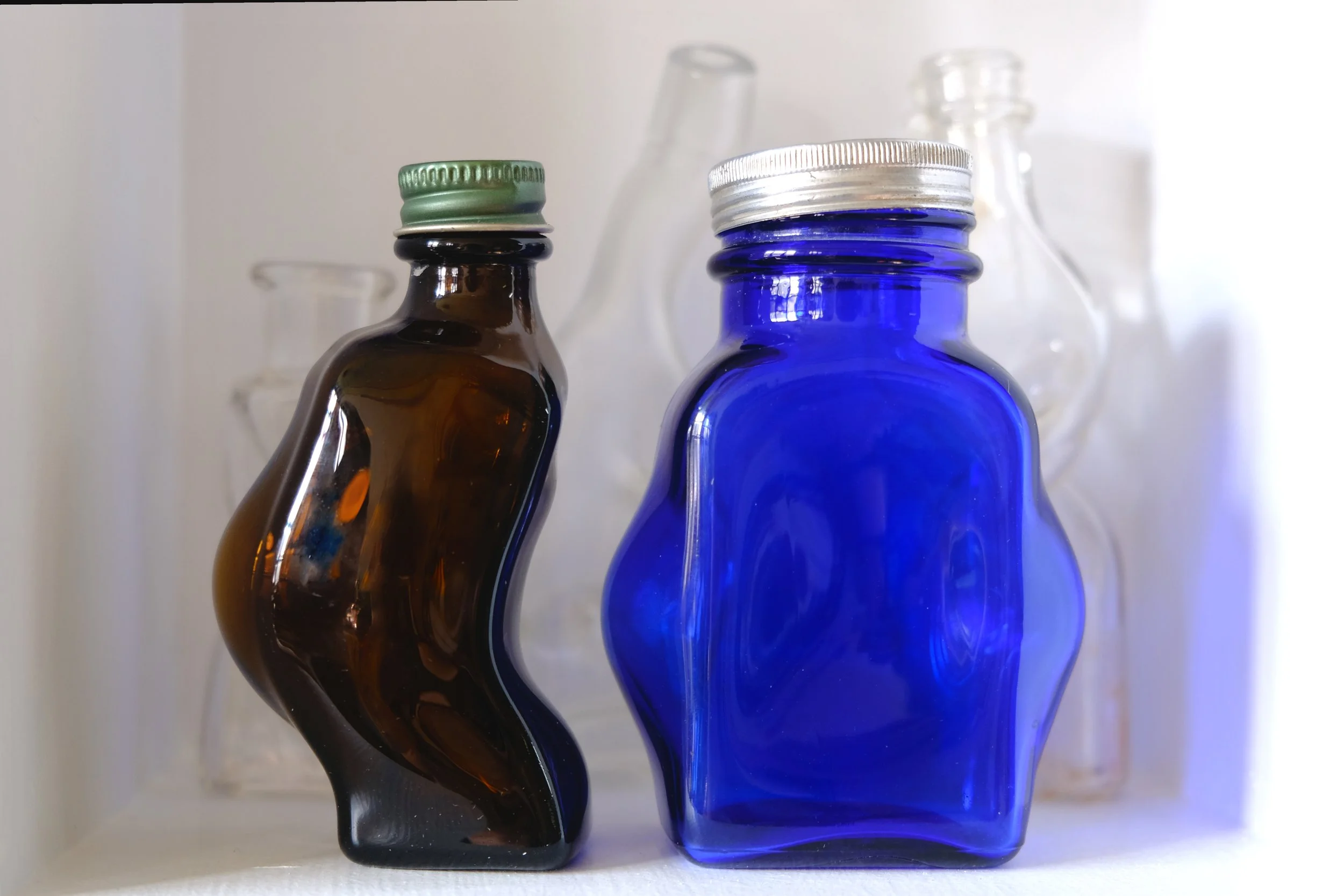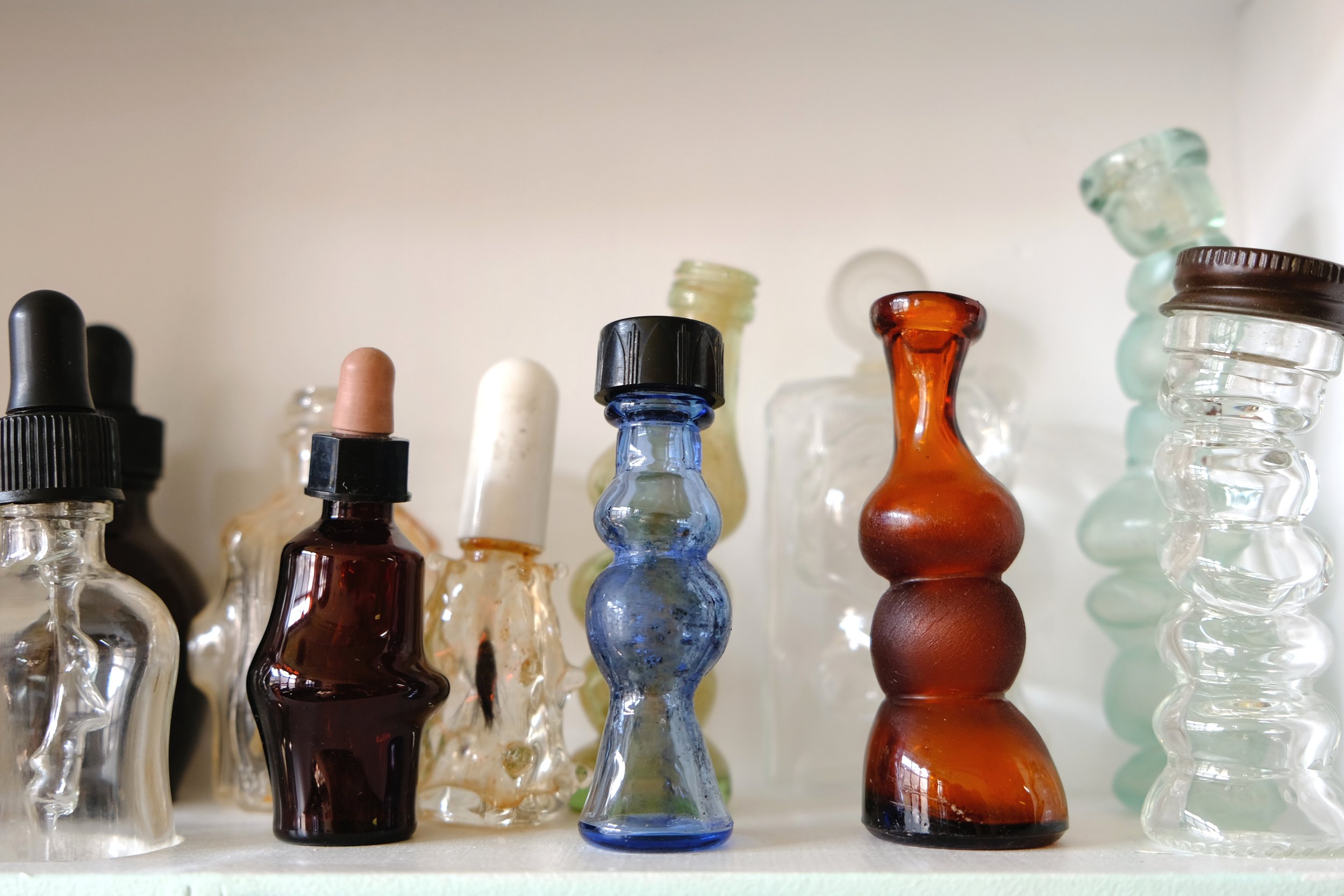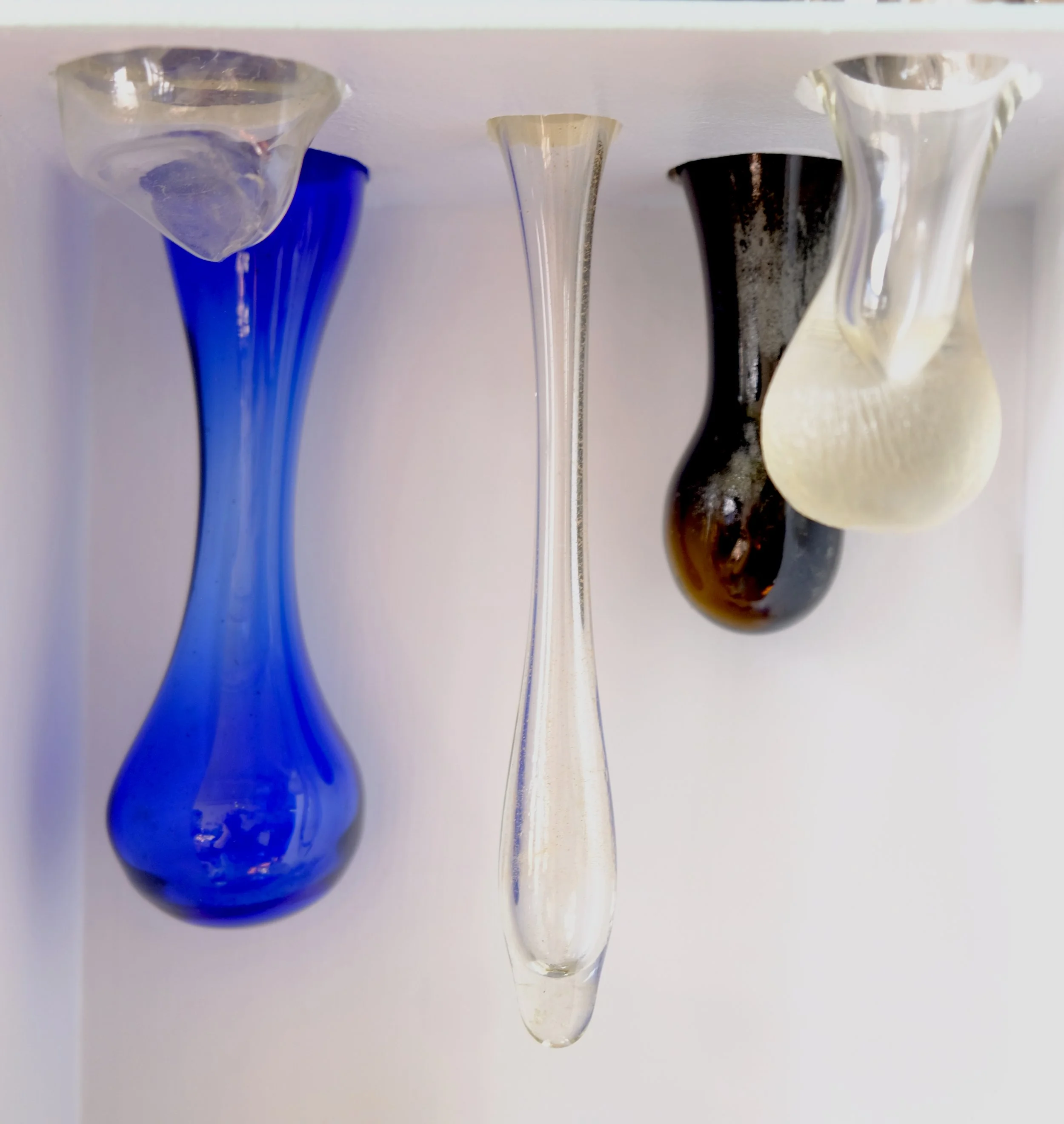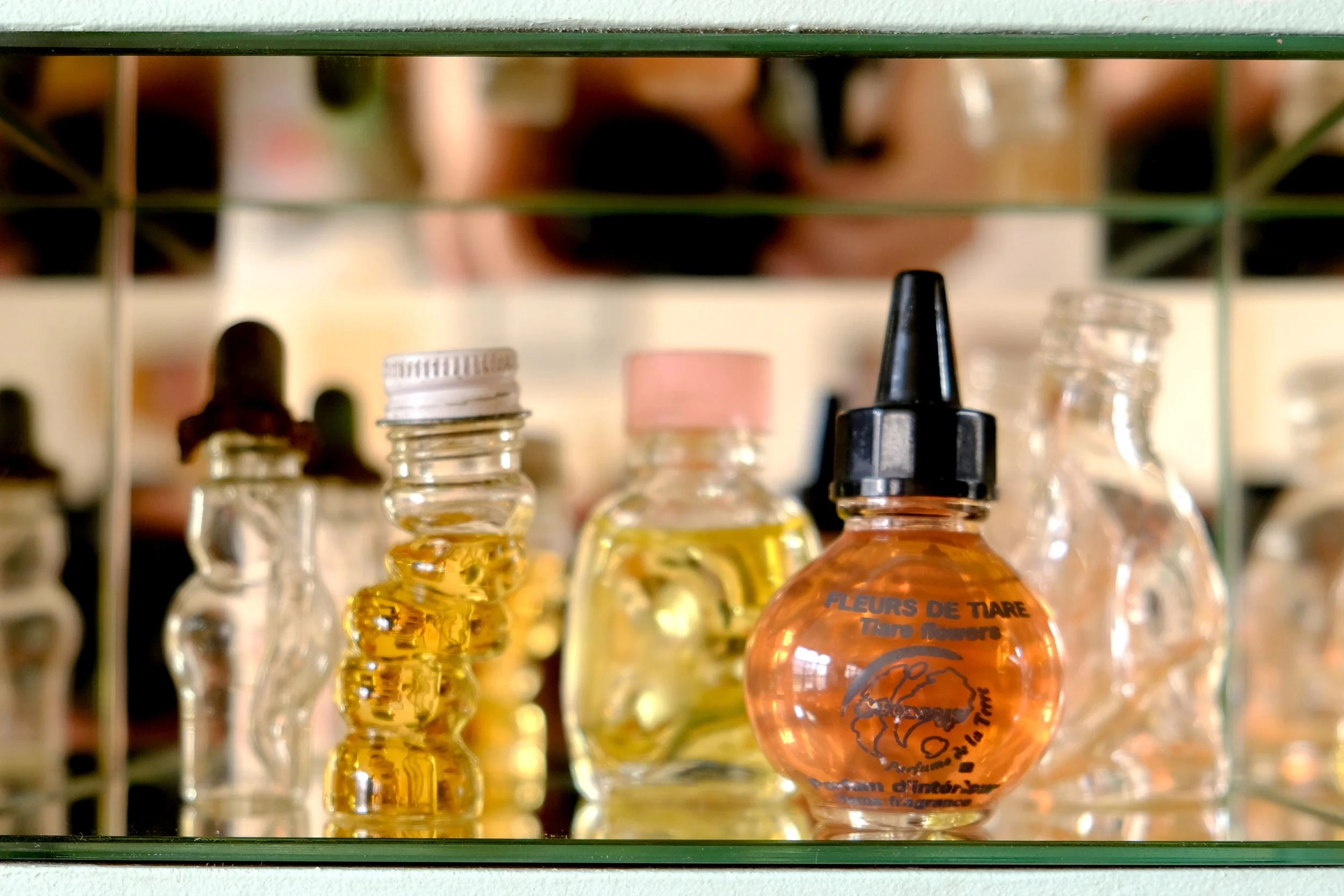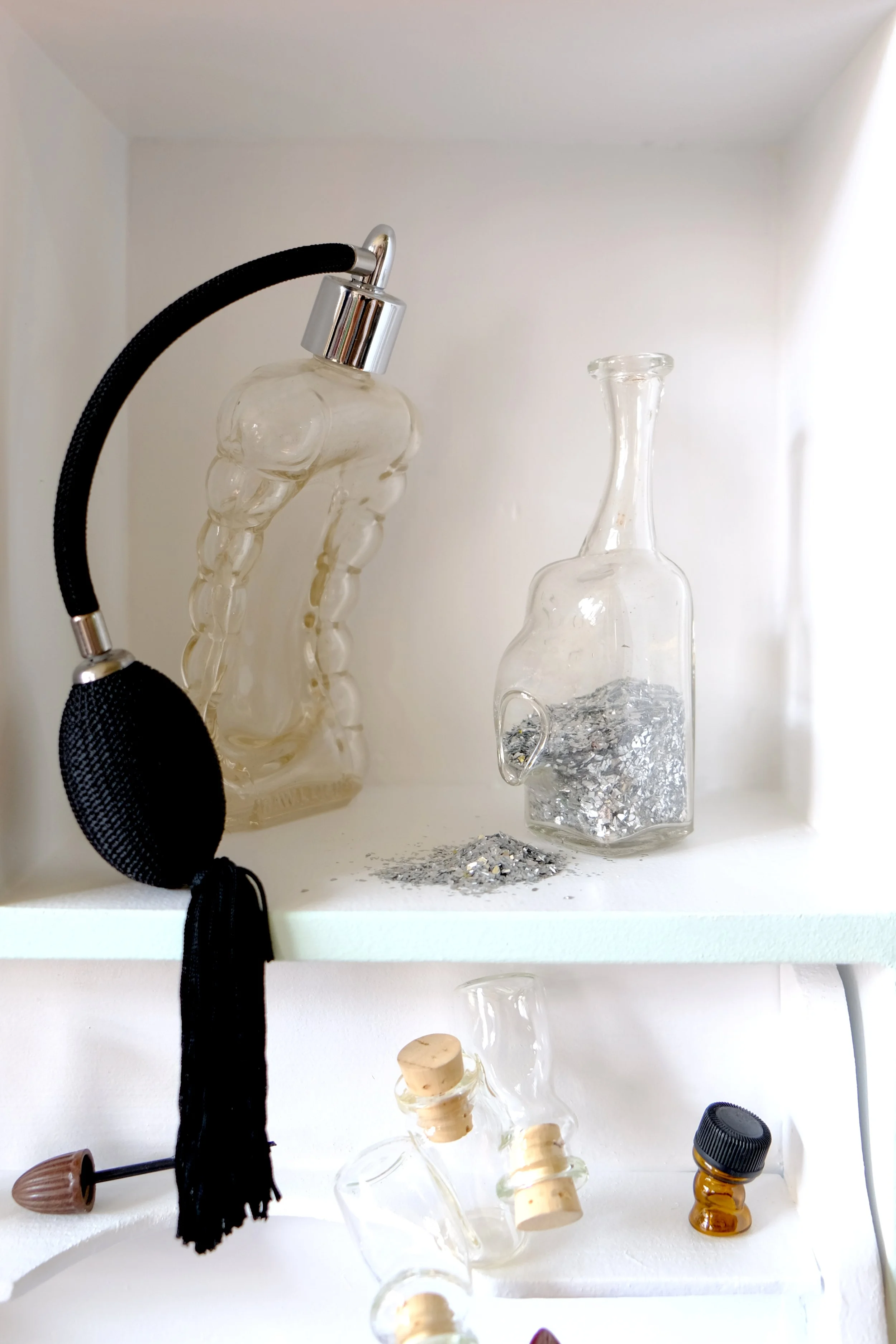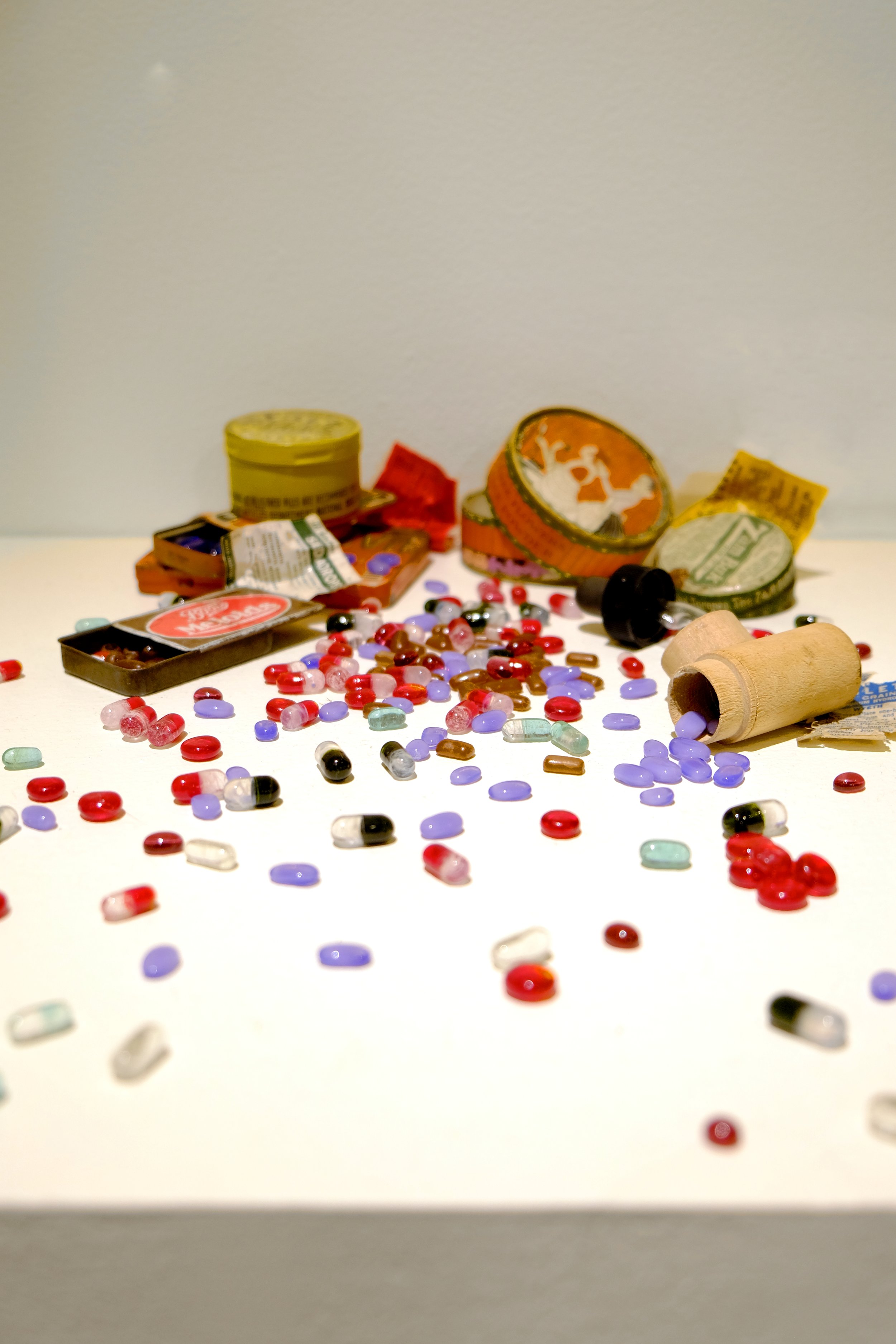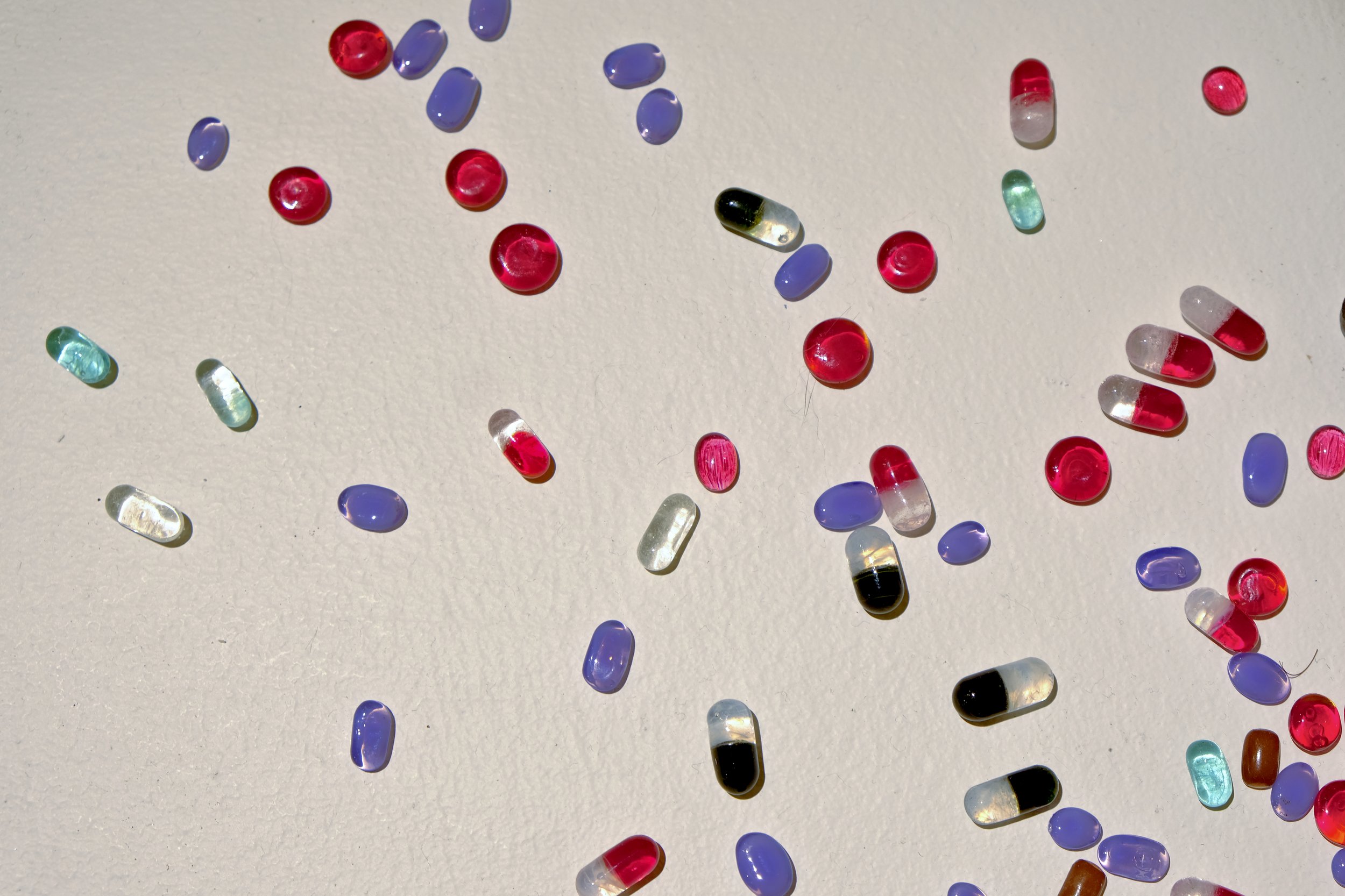POSSIBLE SIDE EFFECTS
EFFETS SECONDAIRES POSSIBLES
POSSIBLE SIDE EFFECTS
EFFETS SECONDAIRES POSSIBLES
Industrial glass, mirrors, glitters, ready-made - 2025
The medicine cabinet was originally a place where pharmacists, and in earlier times apothecaries and healers, stored their medicines. Over time, medicines have become more available and accessible, to the point where their use is now so common that people have started to create home medicine cabinets. This small piece of furniture holds all the medicines, ointments, syrups, and healthcare products found in modern households. The cosmetics industry has evolved alongside the pharmaceutical industry. Cosmetics encompass skin, nail, and hair care products designed to preserve, beautify, or modify the appearance. The cosmetics industry has its roots in altering the appearance of the human body. Cosmetics have different symbolic meanings depending on the culture and era, but one thing is certain: they have always been quite distinct from pharmaceuticals intended to treat disease. Yet we store cosmetics and pharmaceuticals together without distinction. How did lipstick, combs, nail polish, gel, and razors end up in the home pharmacy?
The line between pharmaceuticals and cosmetics is very thin and sometimes difficult to define. I think the cosmetics industry has understood this well and is using this fact to convey the essential nature of pharmaceutical products to cosmetics. Cosmetics have always been in the luxury, non-essential category, concerned with aesthetics, while pharmaceuticals treat vital ailments and conditions.
Cosmetics are now firmly established in everyday life and even have an impact on identity, as is the case with the artistic use of makeup, the ancestral knowledge of cosmetics fabrication, and the expression of gender or cultural identity. However, could the negative effects of their consumption be disproportionate to their benefits? If we consider the costs of pollution, animal testing, side effects, human costs of extraction and processing, social norms, waste, and garbage...
The piece EFFETS SECONDAIRES POSSIBLES (POSSIBLE SIDE EFFECTS) is therefore a reflection on the cosmetics industry, its evolution and its presence in our daily lives, its negative impacts, but also its positive aspects, hence the “possibility” stated in the title. I explore this reflection further through the idea of an unfinished cycle of transformation induced by the peremptory nature of goods produced for financial gain by both the cosmetics and pharmaceutical industries. This installation aims to be the missing link to compensate for the unsustainability of this otherwise harmful cycle. I recover cosmetic waste where the cycle ends and transform it to reintegrate it into the pharmacy in a new form, dressed up. Ultimately, the raison d'être of the content is thus transposed onto the container itself: the bottle has been given a makeover.
The pharmacy and its contents symbolize the ambiguous place where metamorphosis occurs: where we play on the line and play on words, where aesthetics, cosmetics, and pharmacology intermingle. The bottles from various sources, unaltered, are intended as an analogy with humans, stripped of cosmetics. I “make them up” by transforming them, like a cosmetic product that adorns humans, altering their physical appearance. The bottle, like humans, retains its nature but takes on a new look.
